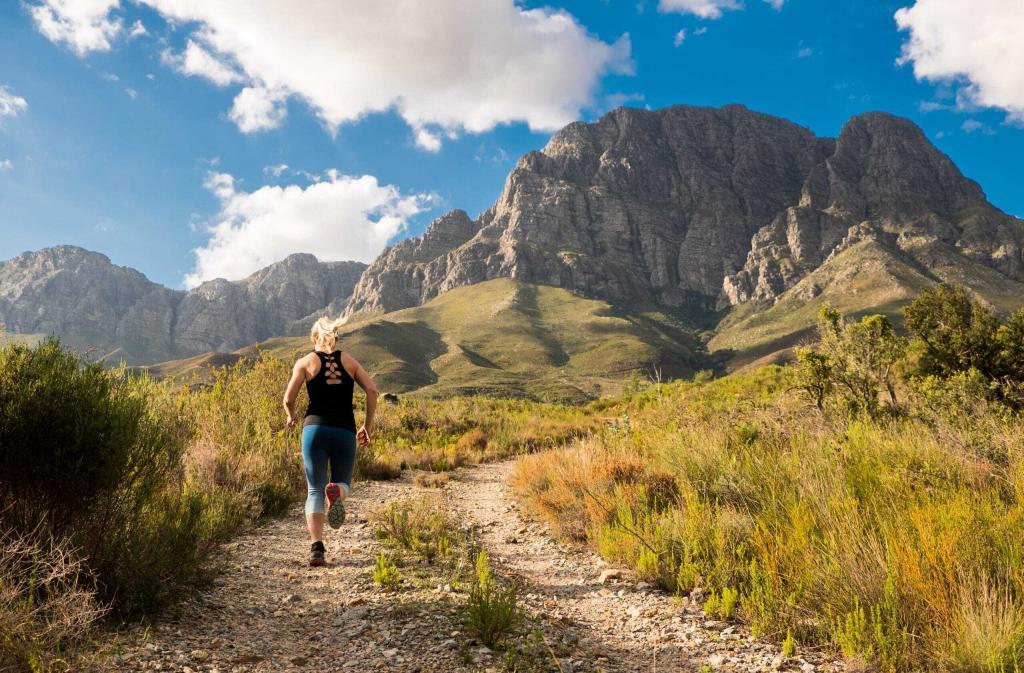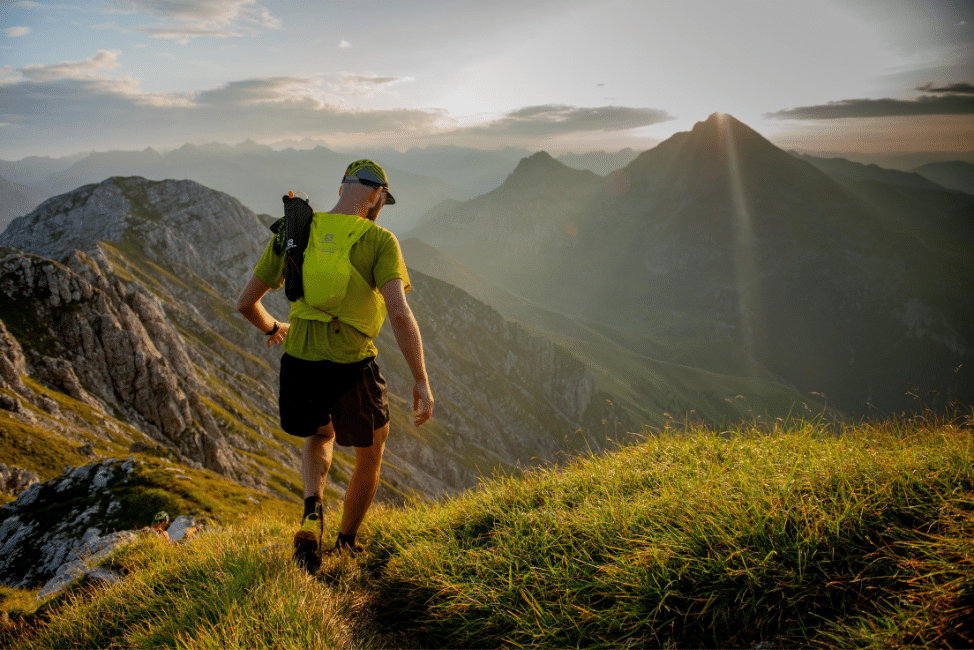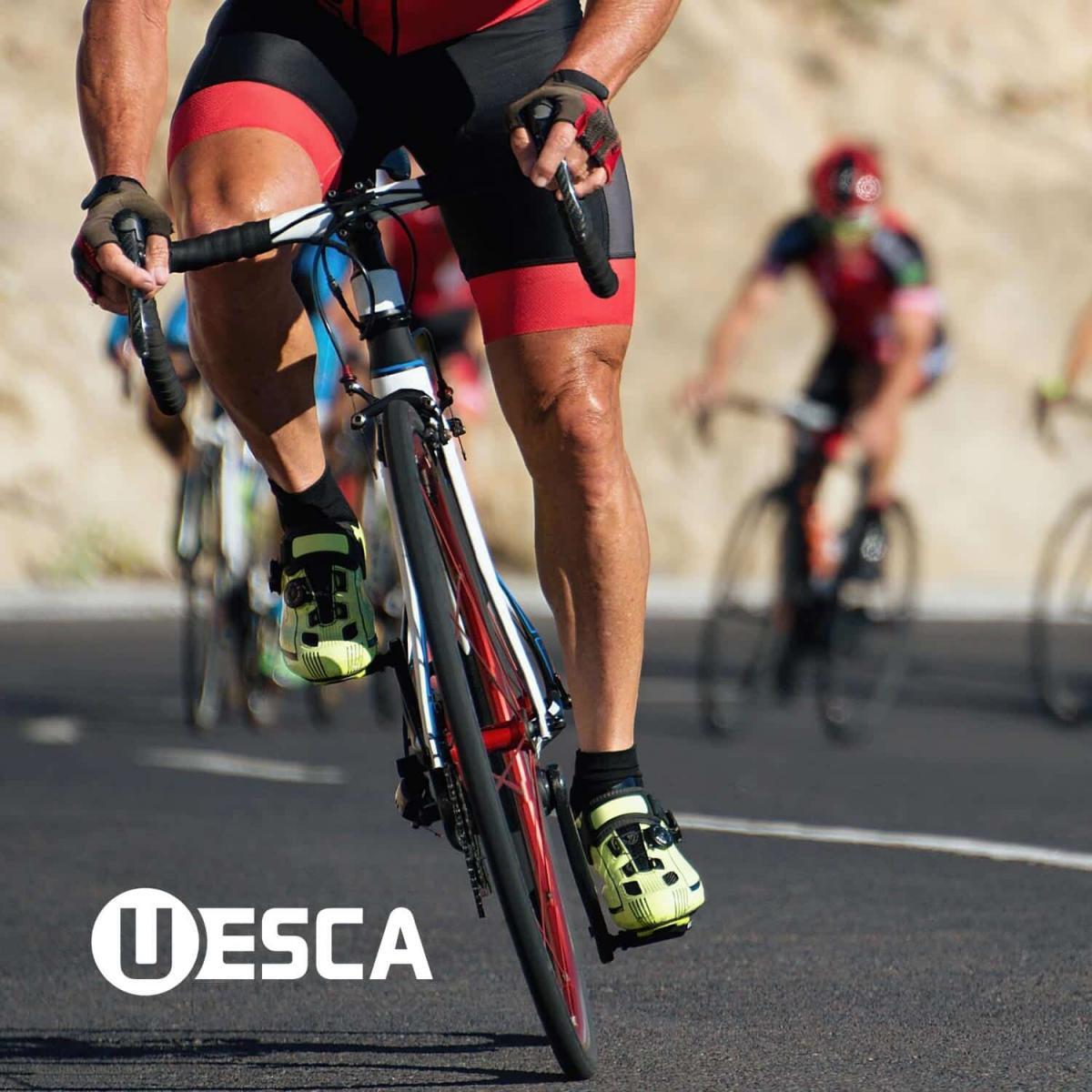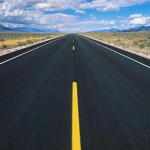
Trail running is a valuable training tool for any runner to keep in their tool chest to help them improve. Even if your goals are exclusively limited to road races, you’ll give yourself a big competitive advantage by strategically training on trails. In other words, run trails to become a faster road racer.
Getting off-road on softer, more variable surfaces has a lot of benefits that we’ll cover in this article. But besides the tangible training benefits, runners also have more fun on trails!
Just consider what you may experience trail running that you won’t on the road:
- The scenery can be beautiful (especially if you live in a state like Colorado like I do!)
- It can be cooler, with more shade and less asphalt to absorb the sun’s heat
- The time passes faster as you’re focusing more on the terrain and your footsteps
- Being surrounded by nature has been shown to improve mental health
Awe-inspiring natural landscapes are great. But will trail running actually help your aspirations to become a faster road racer?
Yes, it sure can. Let’s explore the myriad benefits so you can start adding more trails to your current training program!
Trails Can Reduce Injury Risk
Running injuries are technically called repetitive stress injuries. They’re caused by doing the same movement repeatedly (like running…) without sufficient recovery (it doesn’t help if you also have inefficient movement patterns that get exacerbated over time or with fatigue).
Most running injuries are repetitive stress injuries, with the exception of acute injuries that happen when you run into a fire hydrant (been there) or twist your ankle in a pothole.
Anything that reduces the repetitive stress of running can aid your injury prevention efforts. Trail running is a fantastic candidate for exactly that!
See, trails almost always have a more uneven surface even if you’re running on well-manicured grass, a smooth dirt trail, or a crushed gravel path. It’s that uneven surface that can help you stay healthy.
It makes every foot strike slightly different from the one before it. You’ll have to navigate more frequent elevation changes, rocks, variable terrain, roots, sticks, and other debris.
For those runners who are particularly injury-prone (say, if you have a history of Achilles Tendinopathy, stress fractures, or IT band Syndrome), moving some runs during the week to an off-road surface can help reduce the overall risk of suffering a repetitive stress injury.
Trails Build More Athleticism

Trail running not only reduces your injury risk, but it helps you become a more capable, athletic runner. And that’s something we all want!
Navigating the uneven surfaces of most trails – as well as experiencing more elevation changes – builds coordination, mobility, and proprioception that you just can’t get on the roads.
This aspect of trail running will reduce your injury risk. But it will also allow you to become a faster runner, as you can now transfer this new coordination and strength into speed.
More vertical gain and the demands of navigating unsure footing have quite a few big upsides for road runners:
- More strength and power (helpful for speed)
- Increased coordination (reduces injury risk)
- Better mobility (helps you feel better and improves general athleticism)
For that graceful, smooth, youthful stride, it’s best to spend some time on the trails!
Trails Can Promote Recovery
This benefit only applies if you choose an easier trail to run. Mountainous, technical trails at high altitude do not count!
But for most of us, our local off-road surfaces can be a major boon to our recovery efforts if they’re used properly.
First, these surfaces are typically slower than running on smooth terrain like the road or a sidewalk. Running slower is always a good thing during recovery runs as it helps us keep our heart rate lower and reduces the mechanical stress on our legs.
For this reason, trail running can be a powerful “governor” that limits your ability to run hard when you shouldn’t be running hard.
Second, trails are a softer surface than concrete or asphalt. This has two major advantages:
- They reduce muscle tension, which aids the recovery process
- Trails also increase stride variability, reducing injury risk
These valuable benefits are exactly what we want in a recovery run! While muscle tension is helpful for performance on race day – but not during recovery. And when we’re optimizing for recovery, stride variability helps reduce injury risk when we’re often tired, sore, and have less coordination (say, after a hard workout, long run, or race).
No matter your goal race – whether a mile or a marathon – every road runner can benefit from running on more off-road surfaces.
Just remember to use trail running as a training tool, just like a squat or a tempo run. Use it appropriately, strategically, and when it will give you the most advantages.
So there you have it, run trails to become a faster road racer!
Jason Fitzgerald is a guest blog writer for United Endurance Sports Coaching Academy (UESCA) Jason is the founder and Head Coach of Strength Running as well as the host of the Strength Running Podcast. He is a 2:39 marathoner, 2017’s Men’s Running Magazine Influencer of the Year, and contributor to publications like Runner’s World, PodiumRunner, Trailrunner Magazine, and more.










